Search
Remove Ads
Advertisement
Summary 
Loading AI-generated summary based on World History Encyclopedia articles ...
Search Results

Article
Disarming Aphrodite: Rediscovering the Venus de Milo
The so-called Vénus de Milo is perhaps one of the most iconic works of Western art of any period. The statue of the goddess was found on the Aegean island of Milos, to which she owes her name, on the eve of the Greek War of Independence (1821-1830...
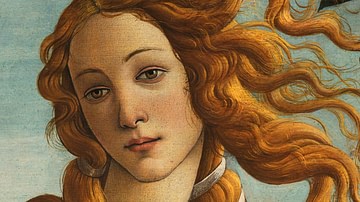
Definition
Venus
In Roman mythology, Venus was the goddess of love, sex, beauty, and fertility. She was the Roman counterpart to the Greek goddess Aphrodite. However, Roman Venus had many abilities beyond the Greek Aphrodite; she was a goddess of victory...
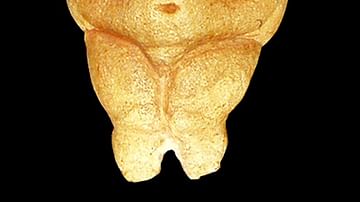
Definition
Venus Figurine
The term Venus figurine is used to describe the more than 200 small statuettes of voluptuous female figures that have been found at Upper Paleolithic sites across Europe and some parts of Asia. “When paleoanthropologists refer to figurines...

Video
Venus de Milo (3D reconstruction)
3D reconstruction of Aphrodite of Milo, better known as the Venus de Milo. Created sometime between 130 and 100 BC, the statue is believed to depict Aphrodite, the Greek goddess of love and beauty (Venus to the Romans). From an inscription...
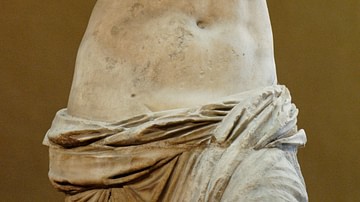
Image
Venus of Milo
So-called “Venus de Milo” (Aphrodite from Melos). Parian marble, ca. 130-100 BC? Found in Melos in 1820.
On display at the Louvre, Paris.
Gift of the Marquis de Rivière to Louis XVIII of France, 1821
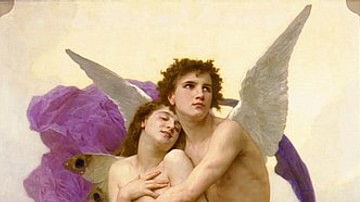
Definition
Psyche
Psyche was the goddess of the soul in ancient Greek and Roman mythology. Born a mortal woman, her beauty rivaled that of Aphrodite (Venus) and inspired the love of Aphrodite's son, Eros, god of desire. After completing a series of seemingly...
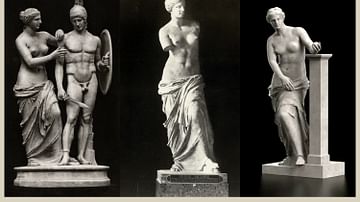
Image
Reconstructions of the Venus of Milos
The reconstruction of the Venus of Milos as proposed by Ravaisson (1890 CE) of the Venus of Milos together with the Borghese Mars (left); an older presentation in the Louvre (1855-1875 CE) with a plinth identifying the statue as “Venus Victrix”...
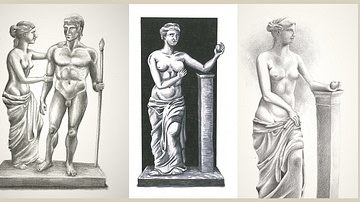
Image
Impressions of the Venus of Milos
Artist impressions of the Vénus de Milo inspired by the reconstructions of Ravaisson (left) and Furtwängler (right).

Image
Three Venus Statues
Three marble sculptures of “Venus” (left to right): Venus of Arles (194 cm, ca. late 1st cent. BCE; Louvre inv. no. Ma 439), proper right arm and lower left arm are modern restorations; Venus of Milos (202 cm, 100-50 BCE; Louvre inv. no...
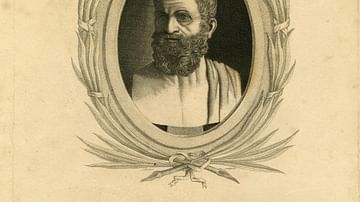
Definition
Sallust
Gaius Sallustius Crispus (86-35 BCE), better known as Sallust, was a Roman statesman and historian. He turned away from an unsuccessful career in both politics and the Roman army, choosing instead on a writing career and produced three major...